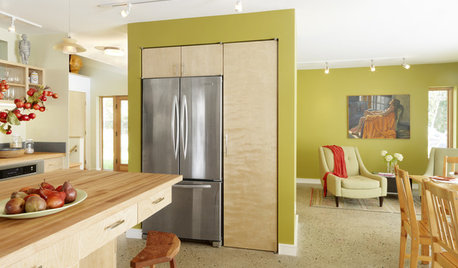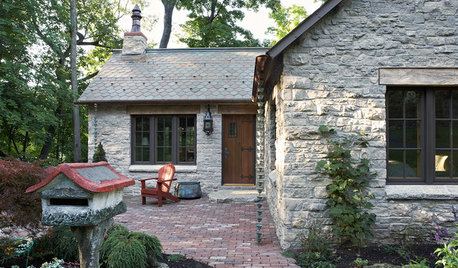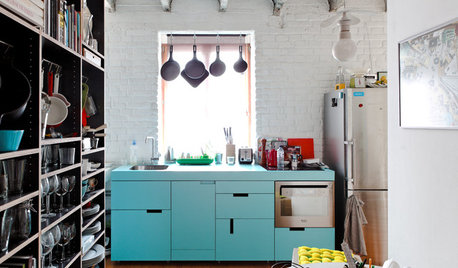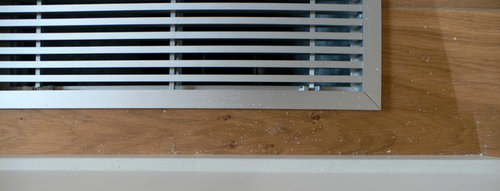Corrosion on newly installed HVAC heat exchanger and coil
lebox
7 years ago
Featured Answer
Sort by:Oldest
Comments (34)
Austin Air Companie
7 years agolebox
7 years agoRelated Discussions
Goodman VS. Trane or Carrier HVAC installation advice
Comments (9)I'm learning more all the time. Can you tell me more about the TXV metering device for the E-Coil? My current 80% unit already has a condensate drain pump used when I run the AC in the summer and I have not had a problem with it. This self contained pump sits on the floor next to the furnace and pumps the condensate into my sump pump then the sump pump pumps it out of the house. Wouldn't I just run the high efficiency furnace moisture drain pipe out to the same pump? I have to imagine that moisture drain pipe is up high on the High Efficiency unit and my condensate pump is on the floor, gravity will do the job unless the pump fails and the water backs up into the furnace. Is that the same moisture drain pipe that I have on my current 80% efficiency furnace that drains the condensate when I run the AC in the summer? One of the quotes I got from a HVAC hybrid install (95% efficient furnace w/ 2 stage variable speed furnace and 15 or 16 SEER Heat Pump) was to put a catch pan under the furnace with the furnace up on blocks and put a pump in the drain pan that pumps the condensate water into my sump pump. This gives you more time to deal with a pump going bad vs the self contained pump I have currently. I have another question about buying the new 95% efficient furnace. My current furnace is 80% effecient and is 100,000 BTUs. I have replacement choices of 90,000 BTU or 115,000 BTU replacement. My house is 2000 sq. ft, not including basement. Is there much efficiency difference between the 2 choices? I know the bigger unit will probably supply more heat, but is that at more cost in energy? Or is the difference nominal. My first thought is to go with the bigger unit for only $100-$200 more in cost. Mikes...See MoreQuotes on replacing hvac
Comments (3)EJ Does your TH share any common walls, floors, with other units? Single floor or two story? Both quotes are for two ton systems? I will assume two ton is correct size. How did existing system perform when working especially in AC cooling during summer mths? I find the pricing on the high side. On first quote, you would want the GAM5A0B30 high eff air handler, not the Gam4. This is the matching system that I would want. See below. 4903053 Active Systems HERITAGE 13 AMERICAN STANDARD, INC. 4A6H3024C1 GAM5A0B30M21 24800 12.00 14.00 22400 8.50 13500 1 HRCU-A-CB 214 456 How do you filter your return air? How many returns do you have? Any hot/cold spots in home? I would want HW Mdl #8321 thermostat same as AS 803 but less expensive. What size heat strip to be provided? I would think about a 7.5 KW. AmStd is good equipment but you need another quote from a different dealer. I just don't like the pricing at all. I see nothing special about the scope of work from the info provided. IMO...See MoreBuyer Remorse on HVAC Install/Contractor
Comments (4)Do you have all the model numbers of what you bought? Did the contractor provide an AHRI number? If he did not then you should request it. As far as I know, the Carrier parts warranty is 10 years if the equipment is registered within 90 days of installation. If it is not registered then it defaults to only 5 years. Anything beyond that is provided by the contractor. Make sure you understand what the contract says about maintaining this additional warranty. The heat exchanger warranty for the 58PH furnace is 20 years. Maybe the contractor assumes you will move before the Carrier warranty expires. Did you increase the sizes of the equipment? That is not a good idea unless a load calculation showed it was necessary and the duct work can support it....See MoreNeed Help on choosing NEW HVAC system!!!
Comments (24)I completely agree with Fudd (and would have used a stronger word than "baloney.") Any company that won't do a "Manual J" load calculation on your home should NOT be hired to install your new system! Here is a good explanation of why doing a load calculation is so important: https://www.pvhvac.com/blog/why-the-manual-j-load-calculation-is-key-to-hvac-design And a 96% efficient furnace is definitely preferable to the 80% offering (in which 20% of the gas you purchase to make it run -- is wasted.) In this day and age, please go with the furnace that only wastes 4% of the gas you purchase. Even your gas utility bill with thank you, with lower monthly costs to run your new furnace (than if you'd bought the 80% efficient version)....See MoreAustin Air Companie
7 years agolast modified: 7 years agoVith
7 years agolast modified: 7 years agolebox
7 years agotigerdunes
7 years agoAustin Air Companie
7 years agolebox
7 years agoAustin Air Companie
7 years agolast modified: 7 years agolebox
7 years agoAustin Air Companie
7 years agolast modified: 7 years agolebox
7 years agoAustin Air Companie
7 years agolebox
7 years agoUser
7 years agoFaith Heating & Cooling Chicago
7 years agoUser
7 years agoFaith Heating & Cooling Chicago
7 years agoDoug Renick
6 years agoUser
6 years agolebox
6 years agoDoug Renick
6 years agoJason Poulsen
5 years agoweedmeister
5 years agoLouis Grammas
5 years agolebox
5 years agoweedmeister
5 years agoHU-766147722
3 years agobeachbenny2
2 years agolast modified: 2 years agosktn77a
2 years agoAustin Air Companie
2 years agolast modified: 2 years agolebox
2 years agolast modified: 2 years agoKarissa Tunnell
last year
Related Stories

FLOORSWhat to Ask When Considering Heated Floors
These questions can help you decide if radiant floor heating is right for you — and what your options are
Full Story
FLOORSIs Radiant Heating or Cooling Right for You?
Questions to ask before you go for one of these temperature systems in your floors or walls (yes, walls)
Full Story
HOUZZ TOURSMy Houzz: Dive Into a Cajun Country Home With an Indoor Pool
Drenched in sunshine from a massive glass atrium roof, this newly redesigned Louisiana home works swimmingly
Full Story
KITCHEN DESIGNHow to Choose the Right Hood Fan for Your Kitchen
Keep your kitchen clean and your home's air fresh by understanding all the options for ventilating via a hood fan
Full Story
HEALTHY HOMEGet Cleaner Indoor Air Without Opening a Window
Mechanical ventilation can actually be better for your home than the natural kind. Find out the whys and hows here
Full Story
WINDOWSSteel-Framed Windows Leap Forward Into Modern Designs
With a mild-mannered profile but super strength, steel-framed windows are champions of design freedom
Full Story
BATHROOM WORKBOOKStandard Fixture Dimensions and Measurements for a Primary Bath
Create a luxe bathroom that functions well with these key measurements and layout tips
Full Story
REMODELING GUIDESGet the Look of a Built-in Fridge for Less
So you want a flush refrigerator but aren’t flush with funds. We’ve got just the workaround for you
Full Story
GREEN BUILDINGHouzz Call: What Have You Salvaged for Home Use?
If your floors, furniture, exterior materials or other home elements have a past life, we'd like to hear the story
Full Story
HEALTHY HOMEDetox Your Kitchen for the Healthiest Cooking
Maybe you buy organic or even grow your own. But if your kitchen is toxic, you're only halfway to healthy
Full Story








sktn77a